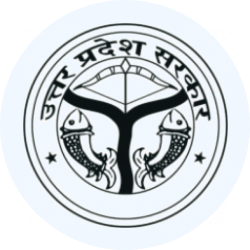UPPSC (UP) Exam > UPPSC (UP) Videos > Course for UPPSC Preparation > How to convert Direct to Indirect Speech | Six Step Formula | Part 2
How to convert Direct to Indirect Speech | Six Step Formula | Part 2 Video Lecture | Course for UPPSC Preparation - UPPSC (UP)
|
113 videos|360 docs|105 tests
|
FAQs on How to convert Direct to Indirect Speech - Six Step Formula - Part 2 Video Lecture - Course for UPPSC Preparation - UPPSC (UP)
| 1. How can I convert direct speech to indirect speech? |  |
Ans. To convert direct speech to indirect speech, you need to follow a six-step formula. First, identify the reporting verb and tense of the reporting verb. Then, change the pronouns and time expressions accordingly. Next, change the verb tenses in the reported speech if necessary. After that, introduce reporting clauses like "that" or "if" if required. Finally, make necessary changes in the reporting verb and pronouns to match the subject and object of the reported speech.
| 2. What is the significance of converting direct speech to indirect speech? |  |
Ans. Converting direct speech to indirect speech is important as it allows us to report someone's words without quoting them directly. It helps to maintain the flow and coherence of the text and is commonly used in writing, especially in formal and academic contexts. By using indirect speech, we can summarize and paraphrase what others have said while also integrating it smoothly into our own writing.
| 3. Are there any exceptions or special rules when converting direct speech to indirect speech? |  |
Ans. Yes, there are some exceptions and special rules to consider when converting direct speech to indirect speech. For example, when reporting imperative sentences (commands), we often use the reporting verb "to" followed by an infinitive verb without using the word "that." Additionally, when reporting questions, we need to change the question word and the word order in the reported clause. It is important to study these exceptions and special rules to accurately convert direct speech to indirect speech.
| 4. Can you provide an example of converting direct speech to indirect speech? |  |
Ans. Certainly! Let's say the direct speech is: "I will go to the party," she said.
To convert this to indirect speech, we can say: She said that she would go to the party.
In this example, the reporting verb "said" is changed to "said that," the pronoun "I" is changed to "she," and the verb tense "will go" is changed to "would go" to match the past tense of the reporting verb.
| 5. How can I practice converting direct speech to indirect speech? |  |
Ans. The best way to practice converting direct speech to indirect speech is by doing exercises and examples. You can find various grammar books and online resources that provide exercises specifically focusing on indirect speech. Additionally, you can create your own sentences in direct speech and try to convert them to indirect speech. Regular practice will help you become more familiar with the rules and improve your skills in converting direct speech to indirect speech.
|
113 videos|360 docs|105 tests
|

|
Explore Courses for UPPSC (UP) exam
|

|
Signup for Free!
Signup to see your scores go up within 7 days! Learn & Practice with 1000+ FREE Notes, Videos & Tests.
Related Searches
















